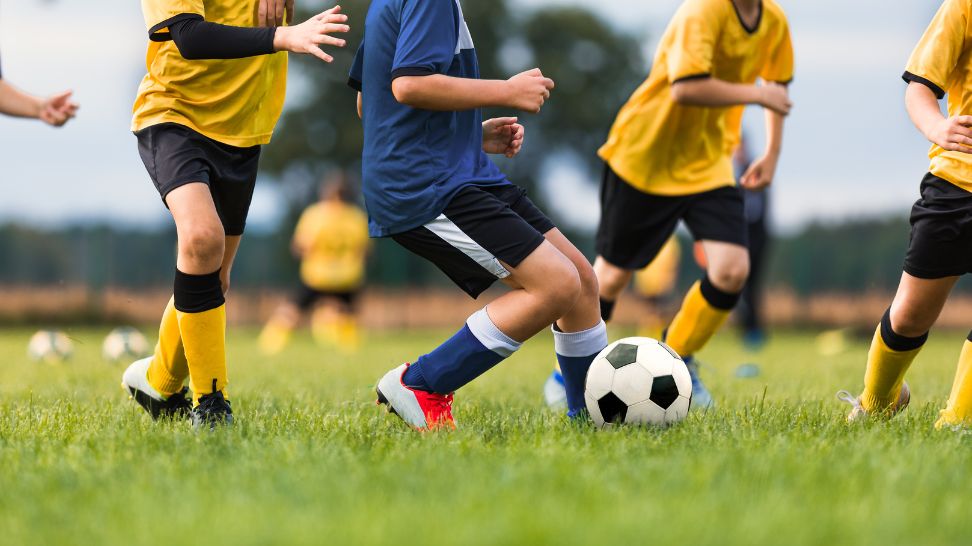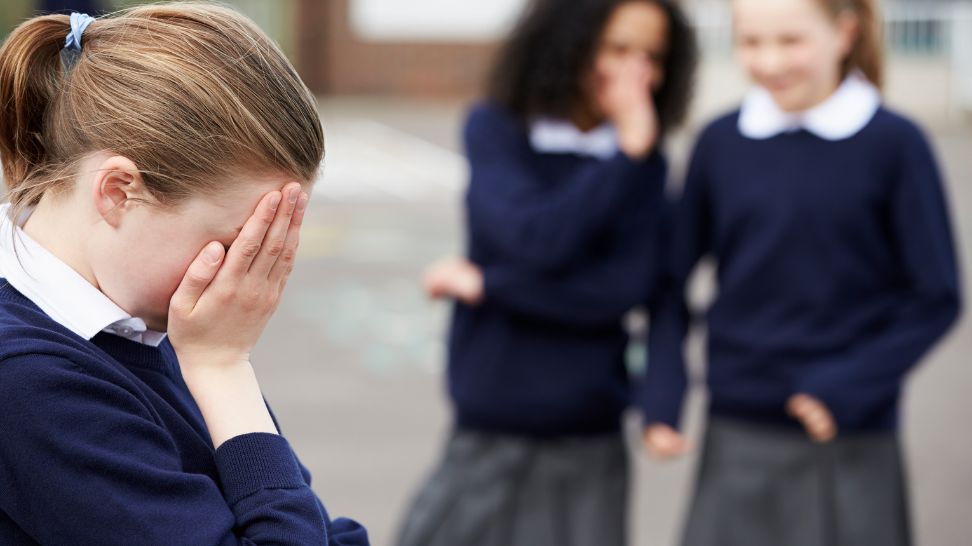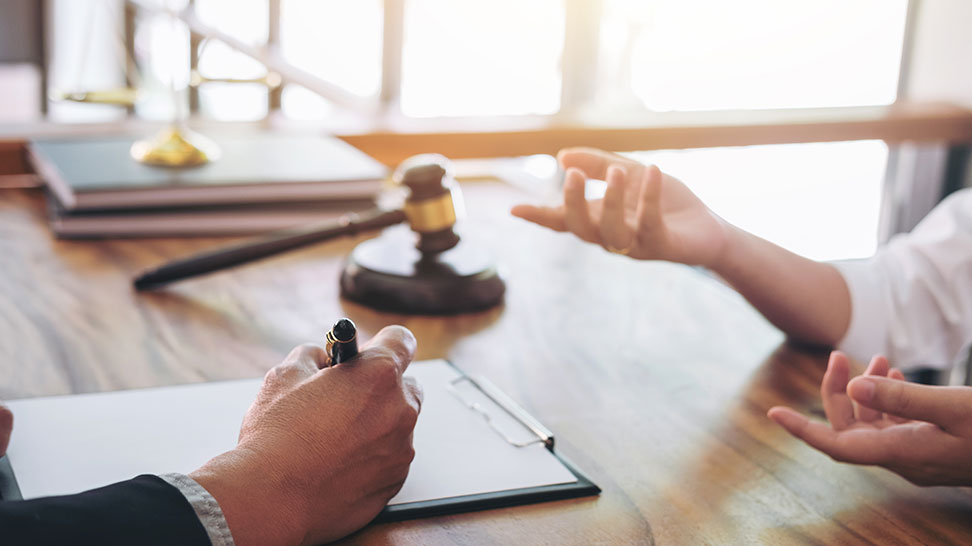You already know you’re responsible for taking care of your child at least until they reach 18 years of age. But did you know that you could also be held financially liable for their actions, even if they didn’t mean to hurt someone?
In the United States, the actions of your children, both online and in the “real world,” can have significant legal and financial repercussions. Keep reading to find out what can go wrong and, more importantly, what you can do to protect yourself.
Importance of Understanding Liability in Parenting
As the saying goes, “An ounce of prevention is worth a pound of cure,” so being aware of the liability you have as a parent can protect both your children as well as your family’s assets. Generally speaking, you can be held liable for virtually anything your child does, including compensating injured people in car accidents to reimbursing a person or business for property damage.
Parents bear the burden of responsibility for their children until the age of majority. While in most states, this is up until the age of 18, other states have extended the age of majority to 19 and 21. For parents with college-aged children in states with a higher age of majority, this can lead to even further legal exposure.
The laws of each state are different, and some states have imposed maximum limits on how much money a parent will pay. However, the crux of understanding liability in parenting comes from the concept of vicarious liability.
Vicarious liability is defined as being legally responsible for the actions of another. Often, this legal term is used in the context of employment where a company may be held liable for the actions of an employee if they did something while on duty and in the scope of their employment.
From a parental perspective, parents are considered supervisors of their children. As such, they are presumed to be liable for anything their child does. As you can imagine, this can expose a parent to a significant amount of liability.
Can a Child Actually be Sued?
Many parents naturally ask: “Can a child actually be sued?” The answer is yes. A minor can be named in a lawsuit and, under certain circumstances, may even be found liable in civil court.
However, plaintiffs rarely stop with the child. They often pursue those with the ability to pay, typically the parents, family trusts, or household insurance policies. For high-net-worth families, this is where risk management becomes critical, as an uncovered judgment can escalate and impact family wealth.
Here’s a simple framework showing how a child’s actions can legally and financially reach the household:
- A lawsuit filed against the minor
- Settlement or judgment entered by the court
- Collection efforts targeting parents’ insurance or assets
- Garnishment or seizure of non-protected property if coverage or asset structuring is inadequate
Understanding this chain allows parents to identify potential gaps and take steps to protect the family before a problem arises.
The situations in which your child can find themselves are practically infinite, but we’re going to attempt to cover the most common circumstances that can expose parents to lawsuit risks.
Social Media and Digital Interactions
Can a child also be sued for something they post online? The answer is yes. Parents may also face liability depending on the nature of the post and supervision.
The world is a lot more complicated than it was when we were kids, and social media is a hotbed of legal risk. Further, it’s estimated that 90% of teens (age 13-17) actively use social media, so most parents are vulnerable to a lawsuit if their child does something that causes another harm, either to their mental health or their financial or reputational interests.
Posting Inappropriate Content
A lot of the legal hot water parents find themselves in is because their children’s and teenagers’ frontal lobes are not fully developed. As a result, they are not as advanced in decision-making and impulse control. They are also less likely to understand the consequences of their actions.
This combination can be toxic in an online environment. Examples of actions a kid or teen may take can include posting defamatory statements or explicit material, which can ultimately lead to legal action.
Legal cases involving minors, such as defamation and “doxxing,” are increasing. Plaintiffs may seek damages for reputational harm and emotional distress. Many homeowners’ or umbrella insurance policies exclude intentional online acts, which can leave parents personally exposed.
Wealthier households, particularly those whose children have large online followings, should carefully review policy language and consider specialty endorsements for digital liability.
Cyberbullying Incidents
Friend groups and cliques are nothing new, but what is new in the digital age is the ability of kids to reach almost anyone online 24/7. Cyberbullying, sadly, is incredibly commonplace, with 58% of kids claiming they’ve been the victim of this type of behavior. When it rises to the level of harassment, stalking, or hate crimes, a parent can be liable for the resulting emotional distress and other fallout.
Courts have held parents responsible when there is evidence of inadequate supervision or a failure to intervene once they became aware of the bullying. Learn more about how parental liability can arise and the steps parents can take to manage legal risk. Monitoring apps, parental-control software, and clear household policies are straightforward, defensible tools that can help protect personal assets if litigation occurs.
For example, in a 2011 New Jersey case, the parents of a 14-year-old were sued after their child participated in online harassment that escalated into severe emotional distress for the victim.
Although the case settled confidentially, the court allowed the lawsuit against the parents to proceed because they allegedly failed to supervise or intervene once notified of the bullying. This demonstrates how parental liability can arise even when the harmful conduct occurs online.
Copyright Infringement
Even for adults, copyright laws can be complex to understand. For a minor, it can be easy to inadvertently commit copyright infringement. Sharing copyrighted materials like songs, music, and images can lead to an expensive lawsuit.
Teach minors that “borrowing” content online is not harmless. Copyright claims can reach tens of thousands of dollars per item, and plaintiffs may pursue parents if the child cannot cover the damages.
For example, several families were swept into the early 2000s file-sharing lawsuits filed by the Recording Industry Association of America (RIAA). In one Minnesota case, a mother was held liable for her teenager’s unauthorized music downloads, resulting in a judgment exceeding $200,000.
The court found that the activity took place on the family’s internet connection and computer, creating grounds for parental responsibility.
Physical Interactions and Play
Kids and teens love to play, and accidents are bound to happen. Unfortunately, an injury, even an unintentional one, can lead to a lawsuit.
Accidental Injuries to Others
While pure accidents may not rise to the level of legal liability, if you or your child were shown to be negligent in any way, it could lead to a lawsuit. This includes accidental injuries in a variety of settings, including your home, other people’s homes, sports fields, playgrounds, and social gatherings.
High-value homes, swimming pools, and recreational equipment amplify exposure, which is why it is critical to have robust liability protections. Maintaining clear safety protocols, signage, and liability insurance endorsements, such as pool riders, demonstrates due care and can limit damages. See how we advise clients to protect property from lawsuits.
For example, in a Florida neighborhood case, the parents of a 13-year-old were sued after their child caused a serious eye injury while playing with an airsoft gun at a friend’s home.
The claim alleged negligent supervision and inadequate safety precautions. Although ultimately settled, the case shows how even informal playdates can create significant financial exposure for families.
Damage Caused During Play
Most of us remember throwing the ball around as a kid, but we probably didn’t think about how our parents could be on the hook if the ball broke a window or caused other property damage. Typically, any property damage caused by your child, even during an innocent game of catch, can lead to a parent having to pay the repair or replacement cost.
Because plaintiffs often name anyone with “deep pockets,” a family’s homeowner or umbrella insurance policy is typically the first line of defense. Parents should confirm that their policy covers damage occurring off-premises, including neighborhood play or travel sports.
Sports and Recreational Injuries
It’s not uncommon for injuries to happen during sports and other forms of recreation. Even if the parties signed waivers releasing liability, you could still face a lawsuit if your child acted in a way to cause an injury that may have been prevented with reasonably prudent actions.
Liability for Injuries
Examples of when a parent can be held liable for injuries to others would be if a parent failed to educate the child about the risk of injury, or if the child was not properly supervised. Preparing your child with some basic information about sports etiquette and how to avoid unnecessary injuries can go a long way toward preventing an injury and a possible lawsuit.
Waivers and releases can help, but they are not foolproof. Courts often disregard waivers that are overly broad or attempt to excuse gross negligence. Parents should keep copies of signed documents, confirm that the club or camp carries its own insurance, and consider an umbrella policy with sufficient excess limits, typically $5–10 million for High Net Worth Individual households.
Property Damage
It’s vital to educate children about respecting the property of others. Any damage done to another’s property can potentially lead to legal action and require the parents to reimburse the property owner.
A comprehensive homeowner’s policy typically covers most incidents. However, luxury properties, fine art, collectibles, and specialty vehicles often require separate riders. Structuring asset ownership through distinct entities, such as LLCs or trusts, can help isolate liabilities and protect personal wealth.
Peer Influence and Group Activities
Peer pressure is nothing new, and kids can easily succumb to being influenced by their friends. Even the “best” most level-headed kid can get caught up in the moment and do something they wouldn’t ordinarily do.
Influence on Risky Behavior
Situations that involve kids congregating can easily cause harm or damage to a person or property, exposing parents to a potential lawsuit. Whether it’s from the pressure of needing to fit in or merely going with the flow, your child must understand the consequences of their actions and act accordingly.
When multiple minors act together, such as in cases of vandalism, pranks, or hazing, joint and several liability means any one family could be held responsible for the full amount. For this reason, high-net-worth households should maintain thorough documentation of supervision plans and keep clear records of communications with other parents or event organizers.
For example, in 2018, a group of Colorado teens vandalized multiple homes with spray paint, resulting in more than $50,000 in property damage.
Several parents were named in the civil lawsuit because joint and several liability allowed the victims to pursue any household with the ability to pay. Some families faced wage garnishment after insurance did not fully cover the damages.
Liability in Group Activities
As the number of kids involved in an activity increases, so does the risk. There’s the potential for groupthink, and there are also more bodies that can get injured. The most important thing a parent can do here is to be aware of what could go wrong and have the proper protections in place to mitigate the risk of a lawsuit and minimize the potential for paying any fees out of pocket.
Insurance and proper structuring remain the most effective protections, forming a layered defense against potential liabilities. Key elements include:
- Primary homeowner and auto policies
- Umbrella coverage
- Titling of assets under protective entities or trusts
- Proactive legal counsel if an incident occurs
School Environment and Events
Schools have a duty to keep kids safe from physical and emotional harm, but their liability isn’t endless. When a child is actively to blame for something, that level of liability can easily extend to the parents.
Bullying and Harassment Issues
While a school can be liable for leaving harassment unchecked, parents can also be liable if their child acts in a way that harms a child and it is shown the parents did not take adequate steps to prevent or address the behavior.
For example, California passed “Seth’s Law” in 2012, and many other states have followed suit. Laws like Seth’s Law outline specific requirements schools must follow to stop bullying in its tracks, especially in terms of gender identity and sexual orientation. The law was passed in response to a 13-year-old boy named Seth who committed suicide after being bullied.
In this case, the school was found liable, which was the impetus of Seth’s Law being passed. With more schools becoming aware of the dangers of bullying, especially in the world of cyberspace, parents are now at risk of coming under fire for failing to rein in their children.
If your child faces disciplinary proceedings, treat the situation seriously. Statements made during school investigations can be discoverable in later civil lawsuits. Engaging legal counsel early can help protect both your child’s and your family’s interests.
Damage to School Property
Over the course of a year, students spend about 1,000 hours in the classroom, with additional hours for after-school events and extracurricular activities. This is a lot of time for kids to get into trouble, and any damage a child does to school property could result in parents being held liable. This may be true for both accidental and intentional damage.
For example, the parents of one Oregon middle school student found themselves embroiled in a lawsuit seeking $19,293 in damages because their child poured chemicals on surfaces in a science classroom.
Although that case settled, it illustrates how seemingly small acts can lead to significant financial consequences. Schools and municipalities rarely waive restitution, and unpaid judgments can accrue interest.
Protecting Your Family’s Wealth: The Asset-Protection Playbook
High-net-worth families face unique exposure, but they also have more tools to safeguard their wealth. Key strategies include:
- Umbrella insurance: Extends liability coverage beyond standard homeowner or auto policies. Coverage should start at one million dollars and be scaled to match your net worth.
- Trusts and LLCs: Holding homes, investment properties, or vehicles in properly drafted entities can help isolate liability and protect personal assets.
- Separation of assets: Keep business and personal accounts separate. Mixing funds can weaken legal protections.
- Preventive counseling: Work with your attorney to establish and document household rules, supervision plans, and communication protocols with schools or organizations.
- Digital hygiene: Educate children about the permanence of online activity and potential legal consequences from posts, memes, or group chats.
These measures are relatively low-cost compared with defending or satisfying a large civil judgment. Taking proactive steps now can prevent major financial losses later.
Consult an Asset Protection Attorney
Given the myriad ways that a parent can find themselves at the losing end of a multi-million dollar lawsuit, it’s advisable to be educated about the risks and engage in some prudent planning with the help of an experienced law firm. This can include discussing this topic with your child, ensuring your child is adequately monitored, and having adequate insurance coverage in the event of a legal dispute.
An asset-protection attorney can map your state’s specific parental-liability limits, review insurance exclusions, and recommend protective structures before issues arise.
Timing is important because transferring assets after a claim can be considered a fraudulent conveyance. Proactive planning is essential. The earlier you structure assets wisely, the stronger your family’s defense will be.
For more information about how your children might unintentionally increase lawsuit risks and how to protect your assets from a lawsuit, contact Blake Harris Law.





